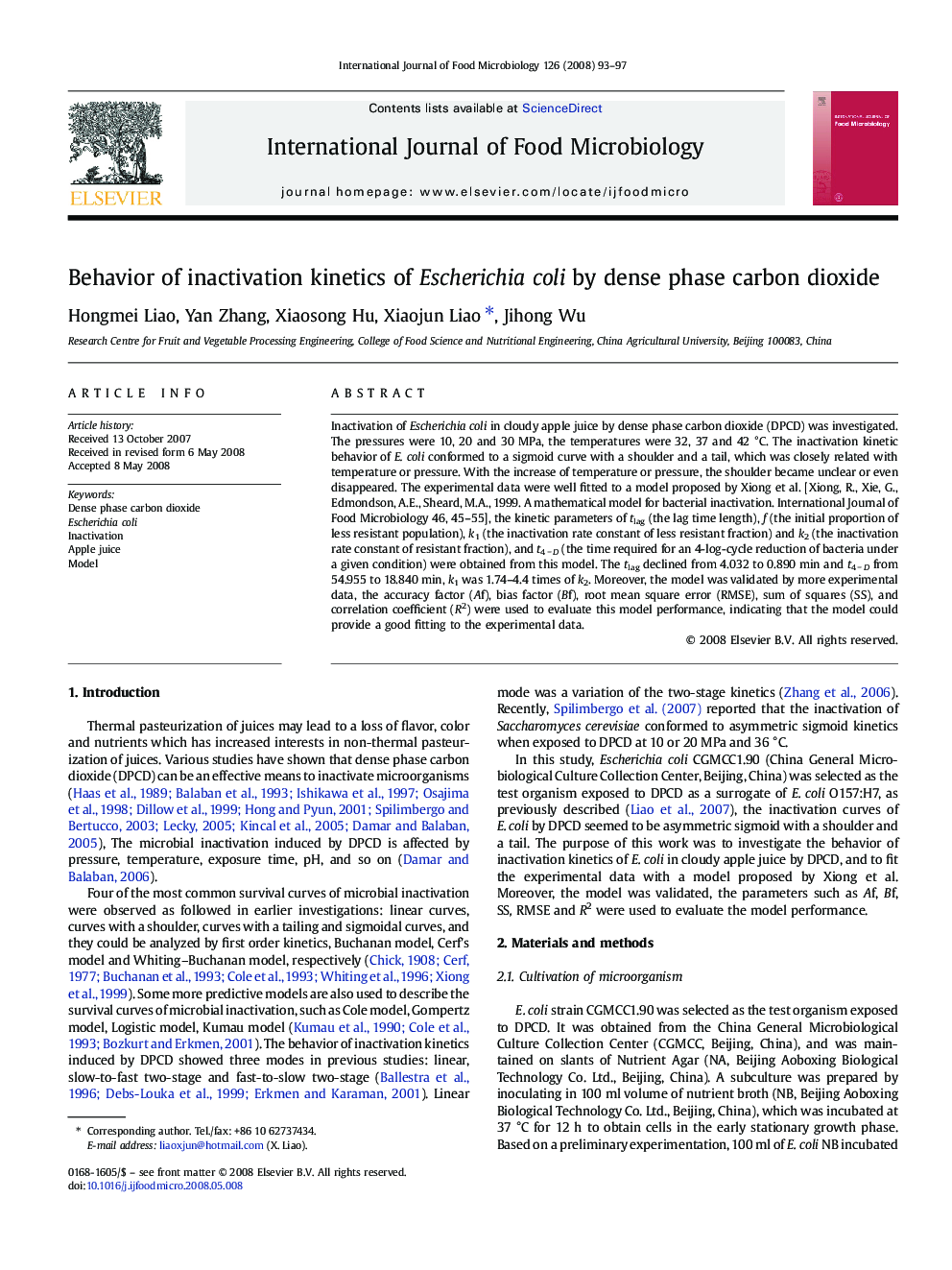| Article ID | Journal | Published Year | Pages | File Type |
|---|---|---|---|---|
| 4369002 | International Journal of Food Microbiology | 2008 | 5 Pages |
Inactivation of Escherichia coli in cloudy apple juice by dense phase carbon dioxide (DPCD) was investigated. The pressures were 10, 20 and 30 MPa, the temperatures were 32, 37 and 42 °C. The inactivation kinetic behavior of E. coli conformed to a sigmoid curve with a shoulder and a tail, which was closely related with temperature or pressure. With the increase of temperature or pressure, the shoulder became unclear or even disappeared. The experimental data were well fitted to a model proposed by Xiong et al. [Xiong, R., Xie, G., Edmondson, A.E., Sheard, M.A., 1999. A mathematical model for bacterial inactivation. International Journal of Food Microbiology 46, 45–55], the kinetic parameters of tlag (the lag time length), f (the initial proportion of less resistant population), k1 (the inactivation rate constant of less resistant fraction) and k2 (the inactivation rate constant of resistant fraction), and t4 − D (the time required for an 4-log-cycle reduction of bacteria under a given condition) were obtained from this model. The tlag declined from 4.032 to 0.890 min and t4 − D from 54.955 to 18.840 min, k1 was 1.74–4.4 times of k2. Moreover, the model was validated by more experimental data, the accuracy factor (Af), bias factor (Bf), root mean square error (RMSE), sum of squares (SS), and correlation coefficient (R2) were used to evaluate this model performance, indicating that the model could provide a good fitting to the experimental data.
